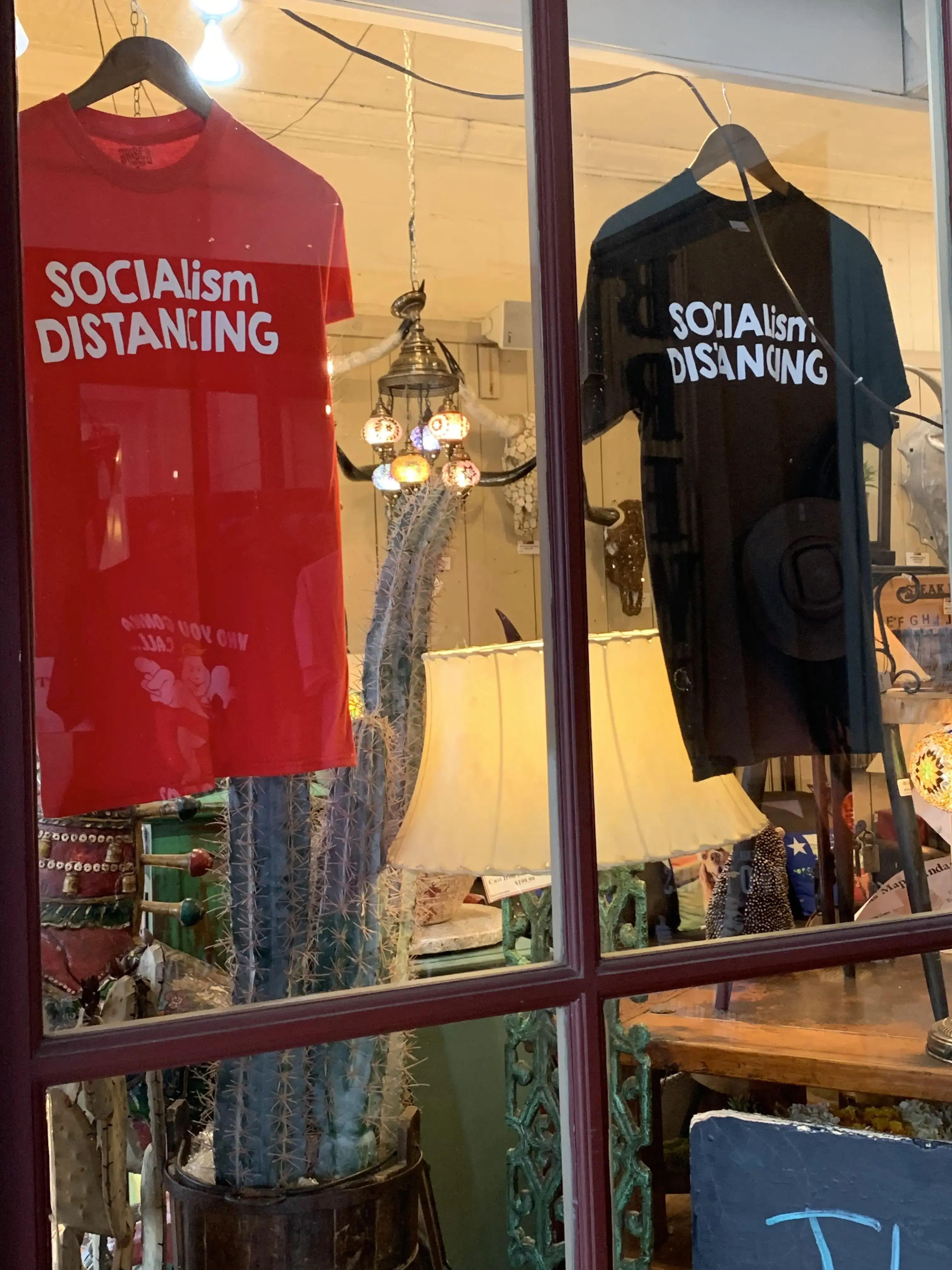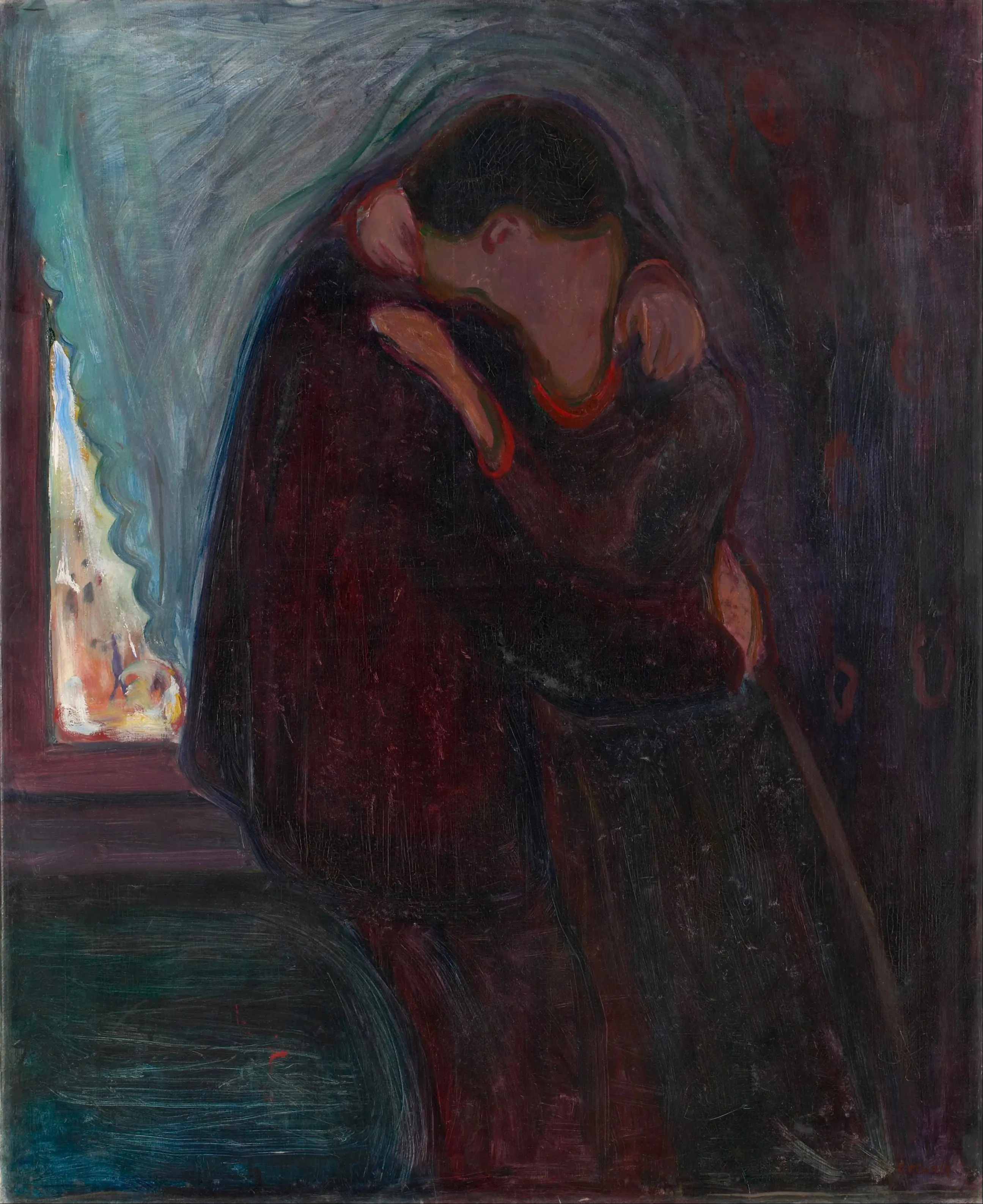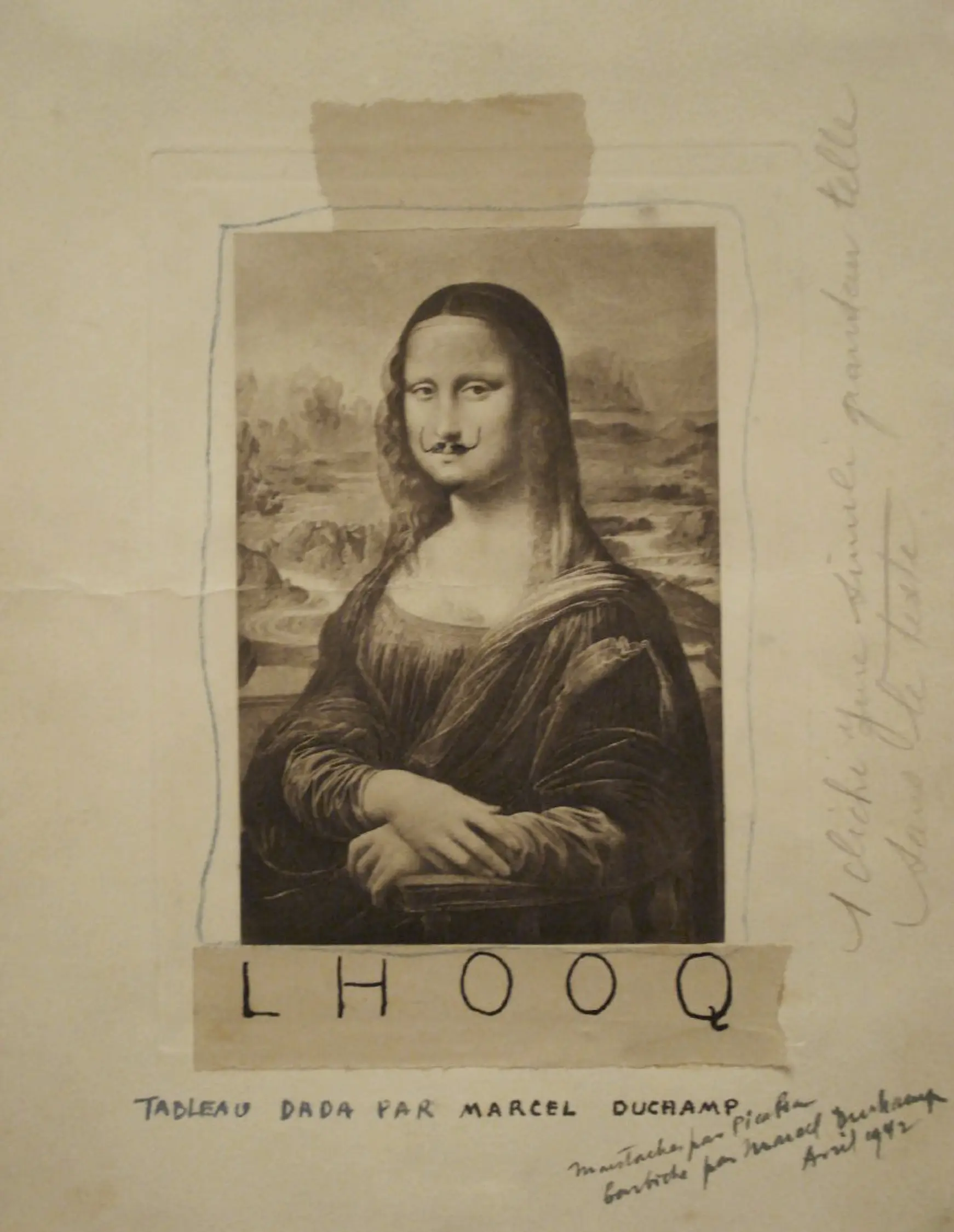POSTS
Hyperreality and the War on Language
BlogRecently, while traveling the interior of Texas, my friend Mike texted a photo of these T-shirts to me. To me this was a postcard from hyperreality: a different place with different rules of meaning that, seductively, was masquerading as reality.

Seen hanging around Central Texas
Socialism Distancing? Socialism Distancing? What is that? It looks like word salad generated by a CAPTCHA gone crazy. “Socialism,” noun; “Distancing,” noun. The more I thought about it, the more perplexed I became. The noun of “distancing” should certainly be modified by an adjective.
So, the shirt designer’s intention, rendered grammatical, was to say “social(ist) distancing.” Holding that to be true, that doesn’t seem to communicate much either. What is signified by “socialist distancing” instead of:
- “capitalist distancing”
- “supply-side distancing”
- “voodoo distancing”
- “Keynsian distancing”
- “Maoist distancing”
I humbly submit that no one, including the designer or the proprietor of the establishment could tell me what the sign “socialist distancing” means vis-à-vis Merriam Webster’s definition:
socialism: noun: any of various economic and political theories advocating collective or governmental ownership and administration of the means of production and distribution of goods
“Socialism.” Merriam-Webster.com Dictionary, Merriam-Webster, https://www.merriam-webster.com/dictionary/socialism. Accessed 8 Apr. 2021.
This word, “socialism,” as used on this T-Shirt was a message in a bottle from hyperreality that had drifted into our world. To understand what’s afoot here, I leaned on my recollection of postmodern philosophy, French Style. And for this we will turn to that enfant terrible, Jean Baudrillard and his challenging work Simulacra and Simulation.
Baudrillard, a product of his times and the surging philosophical modes of his time (Marxism) noted something about the ever-improving efficiency of industrial society:
Mass production and near-perfect duplication would make the meaning of signs less and less certain (or reliable, or universally recognizable)
By “sign” he meant any term or token which is meant to point to a thing in the mind of another. “The Grand Canyon” is a sign composed of letters in the Latin alphabet, arranged in the spelling mode of English which creates the signified idea of a giant hole in the Earth in the mind of the hearer / reader. Let’s take a different sign a sign that signifies a one-of-a-kind thing, a masterpiece: “Edvard Munch’s The Kiss”.
Signs, or as Baudrillard called them, “images,” have their use specified into four “tiers” or “orders” moving from those that feel most familiar and most sure or real to those that are indirectly related to the original subject, uses that are more hyperreal.

The ease of this image being here is part of the problem. Stay tuned
The Phases of Image
We will consider four phases of the same sign: “Seeing ‘The Kiss’” and what that sign’s signified is:
Phase 1
A sign points to a distinct, single reality. A speaker observes a masterfully arranged set of oil paint strokes on a canvas. “The Kiss” refers to this painting.
Phase 2
An activity signifying a level of wealth, education, and erudition that incidentally involves a painting in Scandinavia. “The Kiss” refers to an object of veneration, a masterpiece oil painting, but its importance is lessened because seeing it is wrapped in a statement about wealth, leisure time, and erudition. Savvy critics or dinner party guests are aware that “Seeing ‘The Kiss’” might well just be another sign that the speaker is using to brag about their social station. Late 18th century bourgeois society is roughly here (“My Fair Lady,” “Ulysses,” and modernism in general).
Phase 3
An activity that must be captured on Kodachrome, of one being sufficiently happy in front of a reasonably well-done collection of colors and swirls that looks like Munch’s painting, “The Kiss.” Viewers of the photo probably don’t care whether or not the painting is the authentic “The Kiss.” “The Kiss” is taken as a relic of a notion of romance that, when one is photographed near it, imbues the photographed with “being romantic.” It’s good for honeymoon slide-shows. “The Kiss” as a painting need not be relevant, good, or, for that matter, even be the original. As long as it’s recognizably a sign itself pointing to the idea of the romance believed to be portrayed by the original, it will serve the photographed performers’ needs sufficiently. This would be the mode of the late 20th century.
Phase 4
A debate between social media happens as to whose posed scene of performing “Seeing ‘The Kiss’” more authentically captured the manufactured experience of the third order. Did the filters that darkened the photo of the people (never mind what it did to the painting) help or hurt their performance of the third order act of seeing “The Kiss?” This would be the mode of the 21st century predicted by Baudrillard in the 20th
A Hyperreal Culture
I think most people who have lived through modern times have noticed how the near-perfect fidelity reproductions of originals has driven the value of the original ever-lower while the experience one has “with the original” is now purported to be the whole point (we can see the shades of Marxist thought leaking through here). In effect, while it was only once possible to see the “Mona Lisa” by braving great travels, one can now print the “Mona Lisa” at a nearby print shop to a nearly flawless detail. One can 3-D print Rodin’s Thinker, toss it in bronze, and effectively reproduce what Rodin did, at home. If the point was to “see the work” or have a near molecularly identical copy, we can do that without leaving the comfort of our own homes (in fact, in New York they’ll even deliver).
So why still go to the Louvre or the Rodin Museum? Because the performing of the pilgrimage is the point. And it’s at this level that things start to get really weird.
To draw a moustache on the Mona Lisa and say “this woman is horny”

Reading these letters en Français says “This woman is hot in the ass”
is no longer an affront to the Mona Lisa, it’s an affront to the (second order) sign Mona Lisa which no longer represents a painting, but an idea about cultural value, worth, art, Italian technique of oil work.
It was Baudrillard, for me, who drove the point home, that words we apply to things are themselves used to signify other meta-ideas, other frames of reality. Thus individuals can argue passionately with no hope of mutual comprehension despite using the same signs when their uses of those signs are of differing orders!
And here for me, we point back to “socialism” (distancing).
Back to the T-Shirts
In my incomprehension of the shirt, I was holding that people in rural Texas were probably not inside of a hyperreal bubble. I was suspecting that “socialism” had some relationship to signifying something about economic and governmental organizational principles. My sign “socialism” was firmly second-order.
But the shirt’s designer use of the sign was, assuredly, several steps toward hyperreality in the “phases of image.” For them, assuredly, “socialism” is not actually a sign signifying the system of marshalling resources within a governmental/economic system. Rather, “socialism” it is a term to designate individuals whose political and social activities have not aligned with the Trumpist / Foxist propaganda. Within that bubble of hyperreality, terms like “socialist” or “fascist” need have nothing to do with actual notions of civic or economic order, but merely need be tokens that someone on Tucker Carlson’s opinion-cast used to tar non-Trumpists or non-Foxists. “Socialism” is a tribe and class signifier for the T-shirt designer. Indeed my pointing out it’s non-grammaticalness would be a sign that I was an agent and tool of said “socialism” forces.
That’s why people like myself who laugh at Majorie Taylor Green’s absolute nonsense word salad speeches are missing the point. We think that her words have second-order meaning, that anyone can see the abject idiocy of claiming to be censored, while standing at a podium in the House of Representatives. But that’s just the thing, she’s not in reality, she’s in hyperreality and her signs are 4th order.

Detached from reality and conduit for hyperreality, Representative Greene
This, incidentally explains why post-Trump loyalist forces are so dedicated to culture war and repeating lies that make no sense and which fail in courts of law: they need to create cohesion and align the hyperreal vocabulary and worldview required to gin up votes to inflict their irrational worldview back on the nation again.
Post-Script
-
Ironically, many of those most committed to defeating “socialism (4th order)” would be the beneficiaries of “socialist” policies (2nd order). While it is these Trumpite hyperreality bubbles that are most afflicted by illiteracy, opioid addiction, climate change impact, etc. they claim to eschew the benefits of socialist redistribution because their hyperreality so thoroughly hates (4th order) “socialism.” Pointing out to them their hypocrisy here e.g. Texas Governor Greg Abbot asking for federal redistribution of funds after a crisis in a state that hates “socialism distancing,” does nothing to puncture their hyperreal bubble. Tribal identity is far more dear and rest assured, logic will play no part in it.
-
This should be a clarion call to the more progressive wing of the Democratic party that the word “socialism” needs to be removed from all messaging. I don’t care if we mean “socialism” like highly-literate-and-wealthy Denmark, you can’t bring a second-order sign to a fourth-order reality.